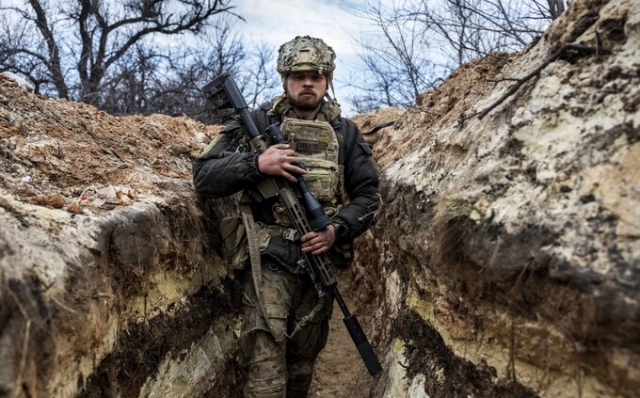 An attack during the mud season would simply mean pushing people back. Photo: John Moore/Getty Images
An attack during the mud season would simply mean pushing people back. Photo: John Moore/Getty Images
It's mud season again in Ukraine, a phenomenon there of such significance that it has a special name: “off-road”, the season of bad roads. Russians say «thaw». It is most severe in the spring, when melting winter ice makes the ground cloudy, but it usually occurs during autumn rains.
Off-road conditions have a paralyzing effect on armies, especially armies on the offensive. Even tanks, which are specifically designed for off-road travel and exert much less ground pressure than cars or trucks (the tank's enormous weight is distributed over a much larger area by the tank's tracks), are often unable to move. off paved roads during mud season.
They often cannot move at all, as paved roads built on mud can fall apart if driven over by heavy vehicles during off-road conditions.
Most soldiers and most army supplies travel on wheeled vehicles rather than tracked vehicles such as tanks. Almost all wheeled vehicles are strictly confined to the roads during the mud season, and often at other times as well. It's also not easy for a walking soldier to get over the mud.So, attacking during the mud season is a terrible idea.
The Russian army, adding to the impression of incompetence it has created since the invasion, of course right now it is conducting a large-scale attack in the Avdeevka area.
It is reported that a third assault wave of 40,000 men is about to be launched. Rain is forecast for ten days and temperatures will be well above freezing. British military intelligence has already suggested that Russian losses in Avdeevka will be the largest in the entire operation this year, and this is saying something.
Ukrainian President Volodymyr Zelensky, under intense international pressure, has sought to create the impression that his army's counteroffensive has not stopped, as his commander-in-chief, General Valeriy Zaluzhny, insistently suggested last week. But despite Zelensky's optimistic tone, Zaluzhny certainly won't attack in the next few weeks unless the weather is unusual: that would simply push his men back.
Off-roading does not survive until winter: with the onset of cold weather, rain gives way to snow, and the ground becomes hard again. But winter brings its own problems. Again, this gives the defender an advantage over the striker, especially in Eastern Europe. «General Winter» is known to have always been the deadliest Russian commander that the French and German invaders had to face.
Zaluzhny cannot seriously attack in winter, it's as simple as that. The counteroffensive has been stopped.
Blitzkrieg is still a long way off
Throughout the Western world, Ukrainians perceive this as a kind of failure. Unfortunately, many Western commentators, often former military officers, have previously expressed the view that Western tanks, if used correctly, would allow a brilliant blitzkrieg-style breakthrough and end the war in a matter of weeks.
 The blitzkrieg-style breakthrough in Ukraine never took place. Photo: Efrem Lukatsky/Associated Press
The blitzkrieg-style breakthrough in Ukraine never took place. Photo: Efrem Lukatsky/Associated Press
They argued that Russia's huge, well-equipped tank forces failed in the initial invasion because the Russians did everything wrong: they didn't know how to coordinate their tanks, infantry and artillery in a combined arms war like that. , as Western soldiers know how to do.
Ukraine was promised Western tanks: the German Leopard, the American Abrams and the British Challenger. But the delivery itself took a long time. As of August, only 87 Leopards and 14 Challengers and exactly zero Abrams reached Ukraine. Contributions from Denmark and the Netherlands will not arrive until next year.
And yet, a hundred tanks is a lot of tanks: enough for a tank brigade. The Ukrainians also had many worthy of the Soviet model. They managed to take large numbers of troops out of action so they could rest, rearm, and train—often by Western instructors from the same armies that trained the confident former military commentators. They had a division-sized armored force that Western officers said could win the war.
Yet the mighty Ukrainian armored advance force advanced only 10 miles. This is far from a blitzkrieg, it is more erosion than lightning.
This is inconvenient for Western military commentators. It must be one of two things: either they were wrong, and tanks, even with Western training and tactics, are no longer a decisive weapon; or the Ukrainians, despite the fact that they are trained by Western armies, are apparently doing something wrong.
No one likes to admit they are wrong, so the view of Western military and ex-military people (usually not expressed publicly, but nevertheless quite universal and put in writing) is that the Ukrainians did wrong, and this is the real reason why they don't do this. I didn't defeat the Russians.
The assumption is that if Western officers had been given an armored division, they would have done a much better job of it.
Even if one sincerely believes in armored warfare, it is still difficult to imagine that a Western general would actually achieve more success than Zaluzhny and his colleagues. After all, in order to carry out the classic operation “Blitzkrieg”, you must first pass the enemy’s front line. This is extremely difficult to do if they are well manned, heavily fortified and protected by deep minefields and large quantities of heavy weapons.
Heinz Guderian, German general credited with leading the first Blitzkrieg attack on France in 1940 , opposed the heavily fortified Maginot Line. He solved his problem by simply driving around through Luxembourg and Belgium. Usually the defender cannot have strong fortifications everywhere.
Today's Russia, of course, does not have strong fortifications everywhere. The Russian-Ukrainian border is weakly protected all the way from the front line to Belarus.
However, Ukraine can only conduct minor, semi-deniable operations on Russian soil and cannot use any Western equipment in them, because it was condition for Western support.
Even the battle front itself from the border to Donetsk does not need to be held very strongly by the Russians, since the Ukrainians who break through this part of the lines will find themselves in front of the Russian border, where they will have to stop, but the Russians will not. Any Ukrainian attack there will most likely be false.
Further, from Zaporozhye to Crimea, the front line runs along the Dnieper River, and this is a serious obstacle.
There are only a hundred miles of front left, from Zaporozhye to Donetsk, where the Ukrainians are not blocked by the river. and can reach the Sea of Azov. If they could get there, they would split the Russian army in two, leaving the Crimean half completely dependent on the Kerch bridges for supplies — bridges that would then be within the range of some Ukrainian weapons. The war would have been almost won.
But knowing where Ukraine's attack should come means the Russians could build their Maginot Line — actually called the Surovikin Line — and the Ukrainians would have to attack directly at it. Even Heinz Guderian might not have made much progress in such a situation.
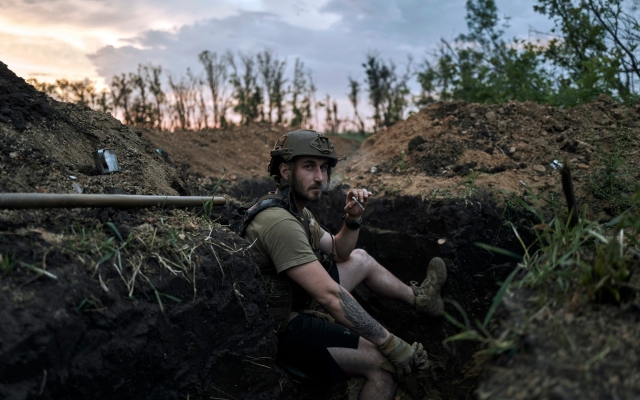 Ukraine is being hampered by the West' Russia's refusal to allow its weapons to enter Russian territory. Photo: Libkos/Associated Press
Ukraine is being hampered by the West' Russia's refusal to allow its weapons to enter Russian territory. Photo: Libkos/Associated Press
But they can't do any of this because we won't let them. They could mount a major attack across the nearly undefended eastern border, or they could flank the eastern end of the battle front, Guderian-style, and roll up the Russians.
Both of these options would force the Russians to withdraw troops, artillery and construction work from the “Surovikin Line”. The Ukrainians could stage their real offensive somewhere between Donetsk and Russia, ending their advance towards Azov on the Russian coast. But they can't do any of this because we don't let them.
First, we prohibit the Ukrainians from operating on Russian soil (or at least from using our weapons to do so), which forces them to attack on a very limited front. Secondly, just to make sure that they really had no chance of success, we hesitated for several months before agreeing to supply the tanks, and then spent several more months sending them, just to make sure that the Russians would have enough time to construction of the “Surovikin Line”.
Roughly speaking, there was no Ukrainian military failure here. We in the West made them fight with their hands tied behind their backs. The fact that they have made progress at all is impressive.
Nevertheless, the fact remains that the offensive has been stopped for the winter. And it is also quite clear that if nothing changes, next year will be much like this year: an intense war of attrition.
“There will not be a deep and beautiful breakthrough,” General Zaluzhny admitted last week. “We have reached a technological level that baffles us.”
Putin’s Waning Power
The prospect of a stalemate, oddly enough, is seen by some in the West as a reason to reduce or end military support.
The thinking seems to be: Well, we spent a lot of money and gave you a lot of equipment that our military said they could defeat the Russians with, and you absolutely couldn't defeat them, so we're not going to give you more. We will simply let you run out of ammo and die, and allow the same criminals who raped, killed and tortured in Bucha and elsewhere, the same regime that kidnaps children en masse and rounds up people to disappear in the Gulag, to take your country from you.< /p>
And let's hope that we are not the following: that Russia will not rest, rearm and then move somewhere else.
However, cutting support does not make sense, even if you do not care at all Ukraine. Even if we care only about ourselves and our safety and want this safety to cost as little as possible, we should continue to send help.
As some of the more astute commentators have noted, spending money on military aid to Ukraine is the most cost-effective defense spending anyone in NATO has ever made.
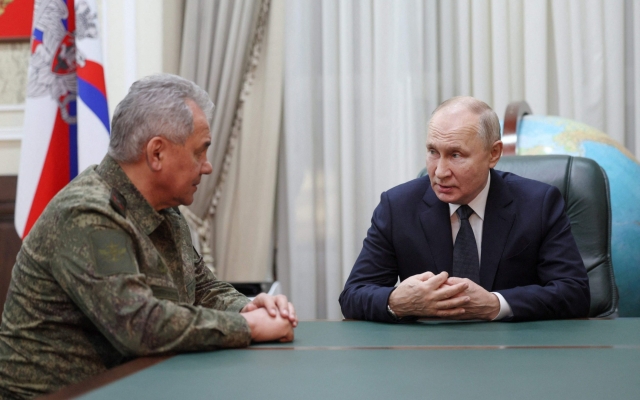 While Putin faces opposition in Ukraine, Putin's threat to everyone else diminishes. Photo: GAVRIIL GRIGOROV/AFP
While Putin faces opposition in Ukraine, Putin's threat to everyone else diminishes. Photo: GAVRIIL GRIGOROV/AFP
The Ukrainians destroyed the Russian army as it existed in 2022: its tough volunteer contract soldiers were gone, as were all the best conscript classes, as well as all the best Russian tanks, armored vehicles and artillery pieces.
<р>Putin has to send the dregs of his prisons to war in vintage cars salvaged from a junkyard. Russian air and sea power have also been severely damaged—or in many cases rendered missing or ineffective. Russia's entire ability to wage war is limited: even basic defense capabilities in places other than Ukraine have deteriorated.
As long as the Ukrainians fight, Vladimir Putin's threat to anyone else is greatly reduced. Western countries spend a small percentage of our normal defense budgets on aid to Ukraine in order to be more or less completely safe from Russia. It would be madness to stop doing this, no matter how long the impasse may continue. As long as Ukrainians are ready to fight, we must support them.
We reach a dead end
However, a deadlock situation is not desirable. Ukraine will lose men sooner than Russia, and the more people of working age it loses, the more difficult it will be to rebuild society and the economy after the war.
There is a risk that large numbers of refugees taken across Europe may not want to return home, a problem that gets worse with every Ukrainian killed or maimed and with every Russian bomb, missile or shell fired. We need Ukraine as a strong ally and the breadbasket of Europe as it was, not as a destroyed, depopulated wasteland.
Given that the impasse is our fault, we Westerners must end it. Moreover, this will not require any difficult or dangerous actions from us.
The clue lies in General Zaluzhny's remark: Ukraine has reached a technological level that baffles it. We sent tanks, artillery and armored vehicles. We sent certain types of missiles, but only the UK and France dared to send long-range precision strike missiles — and we only needed to send Storm Shadow/SCALP.
The Storm Shadow/SCALP («Système de Croisière Autonome à Longue Portée») is a slightly modified version of the French runway demolition weapon of the 1980s called APACHE. We in the UK like to claim that it was developed jointly with France, but in reality it is just an APACHE with a British bunker-busting warhead that doesn't work very well (as my colleagues in the bomb disposal world discovered during the invasion of Iraq). ).
As you'd expect from such an old weapon, it's not all that effective. In particular, being a subsonic cruise weapon, that is, a small robotic jet, it is relatively easy to detect and shoot down. Today its creators like to claim that it has some kind of “secretive” properties, but it seems that this is nothing more than marketing nonsense.
The Ukrainians managed to strike “Storm Shadow” on the Russian naval base in Sevastopol in Crimea, but they had to carry out various special forces raids and other attacks in advance in order to disable Russian air defenses and reach missiles.
They failed to disable the Crimean airbase in Saki, and “Storm Shadow” simply does not have the effect it theoretically should: putting the entire Russian-occupied Ukraine in Zelensky’s crosshairs.
>
Even though the Kerch bridges are supposed to be within range of the «Storm Shadow», they are still standing, allowing supplies and ammunition to flow into Crimea and the «land bridge» into Russian-controlled territory south of the Surovikin Line. It is generally accepted that the British Storm Shadow bunker-busting warhead, also known as BROACH («Bomb, Royal Ordnance, Enhanced Charge»), is not capable of penetrating bridges.
In any case, at this point we can say that Storm Shadow will not be able to bring Ukraine out of the impasse. This is not the legacy version of the US Army Short-Range Tactical Missile System (ATACMS) that Joe Biden reluctantly and belatedly shipped.
This is a supersonic ballistic missile, which is much more difficult to fire. down. But the M39 can't reach Saki, Sevastopol or Kerch, and its cluster warhead can't hit bridges or hardened targets.
To break the stalemate
What the Ukrainians need is one of the full-fledged, full-fledged versions of ATACMS that followed the original . M39: with a unitary warhead rather than cluster submunitions, which means it can hit concrete structures.
Joe Biden is afraid to launch real ATACMS because he thinks the Ukrainians will use them to destroy the Kerch bridges once and for all. He fears that this could lead Putin to nuclear escalation. Olaf Scholz refuses to send the German Taurus missile — very similar to the Storm Shadow, but with a more advanced warhead that can penetrate bridges — for the same reason.
Peace is in the air. Biden, Scholz and their school of thought do not want to create the appearance of supplying weapons that could change the course of the war, because they are afraid that this will anger Vladimir Putin.
The arrival of American missiles helped the Ukrainians push back Russian forces during the 2022 counteroffensive. Photo: Anadolu Agency
But such a timid position is not entirely logical. Weapons capable of changing the course of the war have already been sent.
The 2022 counteroffensive, which pushed the Russians back behind the southern Dnieper River, was a huge success due to the arrival of another American missile, the Guided Multiple Launch Rocket System (GMLRS), mostly fired from the Hymars missile. This will allow for precision strikes at a range of more than 70 km, which is much further than anything the Ukrainians have had before. The Russians did not realize that the Ukrainians (or their friends) had a way to locate all of their field headquarters.
Several headquarters and other important installations such as ammunition depots were destroyed by GMLRS salvoes. The Russian army west of the Dnieper fell into confusion and was driven back across the river by the Ukrainians. The weapons supplied by the United States changed the course of the war.
Likewise, it was argued that sending Western tanks would provoke Putin. It took the British Challenger proposal to show Biden and Scholz that sending tanks was safe.
Again, it is widely believed that sending Storm Shadow missiles would lead to the fall of the Kerch bridges and the shelling of Russian headquarters on the other theater of war, since the limitations of this weapon were not widely known. However, the dispatch of Storm Shadow did not provoke Putin into anything other than bragging.
We must stop listening to arguments that the Ukrainians are fighting the wrong way. Yes, Western tank armies easily defeated Soviet-equipped armies in Iraq and Kuwait, but this was not because they had Western tanks and Western officers: they won because they had complete air supremacy and thus could use precision strike weapons anywhere in the theater of operations.
We must provide the same capabilities to Ukraine, first in the form of full ATACMS systems, and then by ensuring that the upcoming F-16 fighters are equipped with everything down to Joint Air. JASSM is everything Storm Shadow should be and more.
It's time to stop listening to our fears and end the stalemate in Ukraine by taking more aggressive steps than the ones we have already captured.
The West needs to end this war so we can look elsewhere.


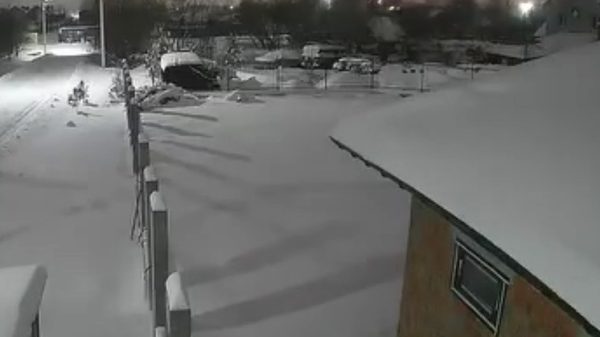
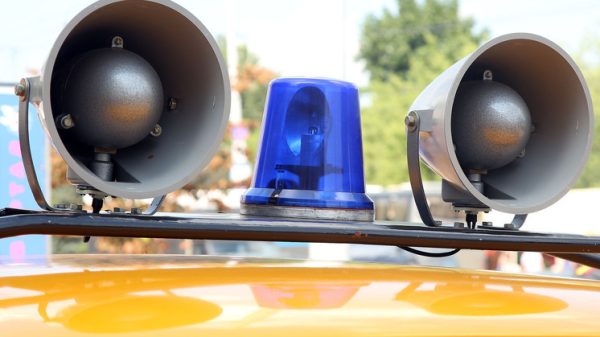
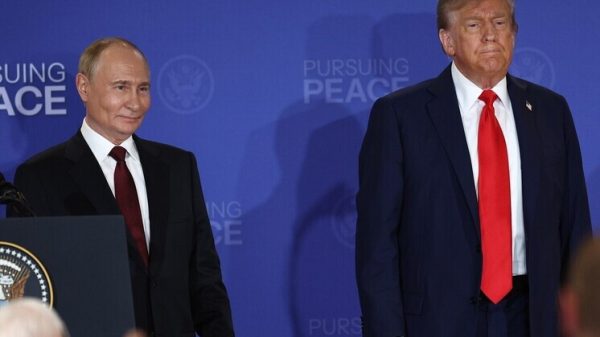
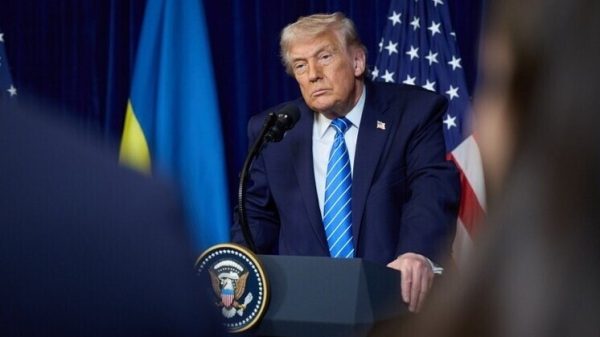


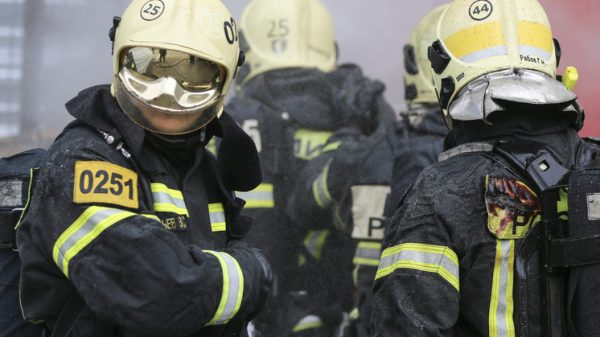
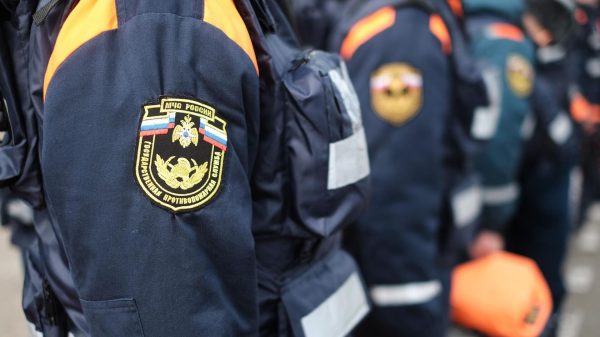

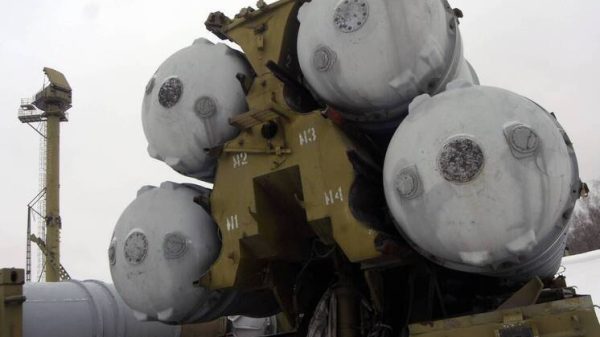

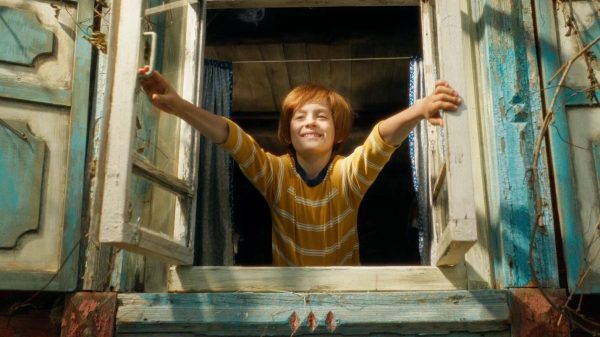














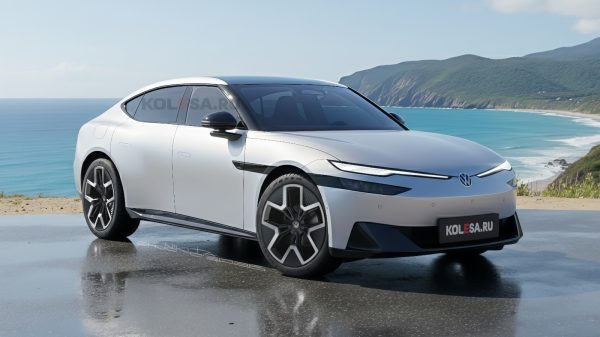





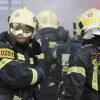























Свежие комментарии